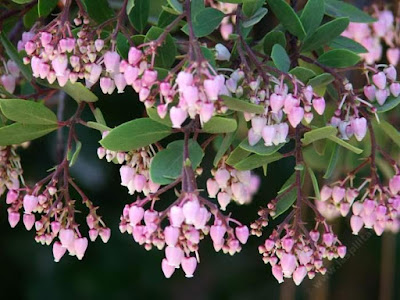Here in Southern California gardeners experience unique challenges, drought being one, but there are joys
as well, such as having hummingbirds that visit all year long. If you want to attract more butterflies and
hummingbirds and even native bees (which do not sting, BTW) to your garden,
then you want to plant more flowers.
It’s as simple as that, really. And, if you like seeing flowers
blooming, then this is a win-win for you: Plant them and they will come!
While our East Coast friends are
blanketed in snow, their gardens asleep and requiring little care, here in
Southern California we are somewhat obligated to keep our front yards looking
tidy and vibrant--- all year long. At
the same time, after working in the garden we can enjoy sitting back in our
favorite chair with a cold drink--- all year long.
To my mind, there is nothing more
rewarding than watching pollinators move about my garden. It means that I have planted enough
nectar-rich native plants. Butterflies,
hummingbirds, and native bees are all looking for nectar. They zoom in on the splashes of color they
spy down below in your yard, and close in to see if they can feast at your
place today. I used to grow flowers just for the beauty and fragrance, but now
I’ve found that adding wildlife to the garden scene makes it all the more
interesting.
I recommend native plants and wildflower seeds. Why? Because native plants are naturally adapted to our climate, our soil, and our weather, so they require less water and little maintenance.
Attract Pollinators with Nectar Rich Wildflowers: Native wildflower
seed mixes are a wonderful addition to your garden. They can be spread en masse
for a sweeping meadow look, even replacing your lawn entirely, or they can be
tucked into existing flower borders. An
interesting idea is to hand-sow wildflower seeds in pots or barrels and place
them in sunny locations. Their blooms
will be unique from the usual big box store flowers we see everywhere.
And the
pollinators will come. For better
success, you need to sow local native wildflowers, rather than a generic mix meant
for the entire country. Native seed mixes are available for both Southern
California’s coastal areas and for inland areas.
Attract Hummingbirds: The hummingbirds will thank you over and over
again with repeat visits if you plant their beloved sage, aka Salvia. Salvias are perennials that will stick around,
growing larger year after year, filling out a garden bed and adding more
flowers. While there are many
different varieties of sage, look for Hummingbird sage (Salvia spathacea) with
whorls of red flowers. Hummingbirds are attracted to these plants, with red
being their favorite color. Hummingbird sage can be grown in garden beds, as a
ground cover, or under trees.
 |
Monarch butterfly (Danaus plexippus) on
San Joaquin Willow Bush (Salix gooddingii)Location: Leo Carrillo State Park
Photography by Kathy Vilim |
Attract Monarch Butterflies: We should all add milkweed plants to
our gardens for the monarch butterflies. I watch the monarchs sometimes on my
walks, flitting about my neighbors’ yards, looking for that splash of color
that means one thing: nectar, and looking for that special plant, the Milkweed (Ascelpias),
that is the only plant they can lay their eggs on to raise the next generation
(called a host plant). When the young
caterpillars emerge, they will devour the plant, consuming as many as 20 leaves
each; it will be their food and their safety until they emerge as
butterflies. So, plant milkweed for the youngsters
and a variety of nectar-rich flowers for the adults. (Important: Plant the variety of Milkweed (
Ascelpias) that is native to your region
– NOT the Tropical Milkweed. For most of
us in Los Angeles, that would be the Narrow-Leaf Milkweed for coastal regions.)
Attract Native Bees: Having more bees in your yard is the answer to
a flourishing vegetable garden. Native (wild) bees do NOT sting, so don’t be
afraid to attract them. For an easy-to-grow bee magnet, plant the wonderfully
aromatic Rosemary plant. Did you know this herb helps improve memory retention?
Not remembering the past, but future-memory, remembering what you have planned
for tomorrow! Anything that helps me with my To-Do List is a welcome addition
to my garden.
Go Organic: One more important
thing to mention: Your garden will NOT support butterflies and other
pollinators if you are spraying chemicals.






















